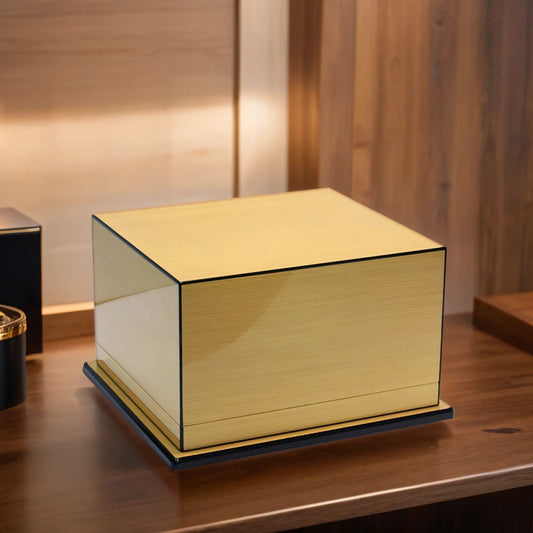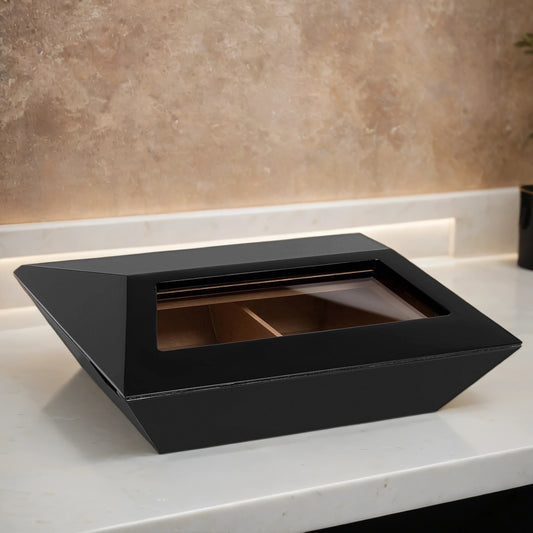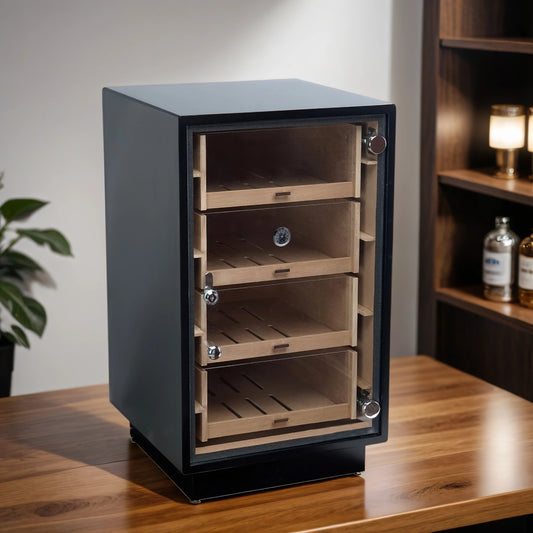
What Are Box Pressed Cigars?
Box-pressed cigars are like the rebellious cousin at the family reunion—familiar yet noticeably different, with a shape that catches your eye and offers something unexpected. They’re pressed into a square or rectangular form, making them feel as good in your hand as they look in a humidor. But these cigars are more than just about the aesthetics; there's a whole history and craftsmanship behind that compact shape. Box-pressed cigars burn slower, can intensify flavors, and somehow manage to stand out in a crowd, even among the most traditional cigars. For those who haven’t tried one, they’re a bit of an acquired taste—once you get it, though, you’re in for a unique smoke that just might ruin regular cigars for you.
History of Box-Pressed Cigars
The origins of box-pressed cigars are somewhat mysterious, with roots tracing back to pre-embargo Cuba. Although it's unclear which brand first introduced box-pressing, several theories exist regarding its inception. Some believe it was a method to maximize packaging efficiency by fitting more cigars into each box.
Others suggest that box-pressing was designed to keep cigars from rolling off flat surfaces—a practical feature, especially once they're lit. Another theory posits that box-pressing helped protect cigars from damage during transport, particularly on old sailing vessels. Either way, it seems box-pressed cigars have been saving us from rogue rolls and rough seas since day one.
Regardless of the exact origin, box-pressed cigars gained significant popularity during the Cigar Boom of the 1990s. A pivotal moment came when Padron released its Padrón 1964 Anniversary blend to mark the company’s 30th anniversary. The cigar’s unique box-pressed profile captivated smokers and critics alike, setting a trend that many other brands followed.
Differences Between Box-Pressed and Round Cigars
While the most obvious difference between box-pressed and traditional round cigars is their shape, several other factors distinguish these two formats. Box-pressed cigars are often credited with offering a slower burn and a looser draw, partly due to the way air flows through the cigar; because the square shape doesn't allow for a full seal with your lips, air from outside the cigar mixes with the smoke, potentially resulting in a cooler and more consistent flavor.
The shape of a box-pressed cigar can also affect how it fits in your mouth. Some smokers find the square profile less comfortable, while others appreciate the unique feel. Personal preference plays a significant role here, as the experience can vary widely among individuals. Many aficionados believe box-pressed cigars burn more evenly than their round counterparts, as the tighter packing and squared-off edges can lead to a more controlled burn, enhancing the smoking experience.

How to Cut a Box-Pressed Cigar
Cutting a box-pressed cigar requires a bit more finesse compared to a traditional round cigar. While a standard guillotine cutter can be used, especially on smaller ring gauges, it might not accommodate larger box-pressed cigars easily. For best results, use a large double-blade guillotine cutter and ensure the cigar is properly aligned before making the cut.
A punch cutter can be a solid choice for box-pressed cigars; a few well-placed punch cuts in the cap can boost airflow without compromising the cigar. Just remember to go easy—nobody wants a cracked cap ruining their smoke. Cigar scissors, on the other hand, give you that fine control that’s perfect for larger ring gauges. Make sure they open wide enough to cover the whole width of the cigar, though—there’s nothing worse than a half-hearted cut that leaves you with a mess instead of a smooth, straight edge.
How Box-Pressed Cigars Are Made
Box-pressed cigars can be created through several methods, each affecting the final shape and smoking characteristics. The most common method involves pressing the cigars after rolling; freshly rolled cigars are packed tightly into boxes, which are then stacked and placed under gradual pressure, gently compressing the cigars into a square shape.
Trunk-pressing is a more meticulous technique, where individual cigars are pressed between wooden slats for 30 minutes to 12 hours. This method results in sharp, defined edges but requires careful handling to prevent damage to the wrapper leaf. It's a labor of love that gives box-pressed cigars their signature look—perfectly squared and ready to impress.
Top-Rated Box-Pressed Cigars
Box-pressed cigars have earned high praise in the cigar community, with many receiving top ratings and awards. Here are some notable examples:
- Arturo Fuente Don Carlos Eye of the Shark: This cigar's unique shape and exceptional flavor have earned it high accolades, including Cigar Aficionado’s #1 Cigar of the Year.
- My Father Le Bijou 1922 Torpedo Box Press: Known for its rich, complex flavors, this cigar is a favorite among connoisseurs.
- Padron Family Reserve #45 Maduro: A celebration of Padron’s legacy, this cigar offers a rich, full-bodied experience.
- Flor de las Antillas Toro: This box-pressed gem from Nicaragua is praised for its balance and consistency.
- Oliva Serie V Melanio Figurado: Renowned for its complexity and smoothness, this cigar has won numerous awards.
- Alec Bradley Prensado Churchill: With a robust flavor profile, this cigar is a standout in the box-pressed category.
Other notable mentions include the Ashton VSG, La Aroma de Cuba Mi Amor, and Rocky Patel Sun Grown Maduro, all of which have received high ratings and are beloved by cigar enthusiasts.
Conclusion
Box-pressed cigars bring a bit of flair and flavor to any smoke session, combining a standout shape with a draw and burn that’s hard to beat. Whether it’s the way they fit in your hand or the unique flavor they seem to unlock, these cigars have something special to offer. If you’re a collector, they add variety to the humidor; if you’re a casual smoker, they’re an experience worth savoring. So, go ahead—explore a few brands, find a favorite blend, and appreciate the craft that goes into every square inch of these beauties.












